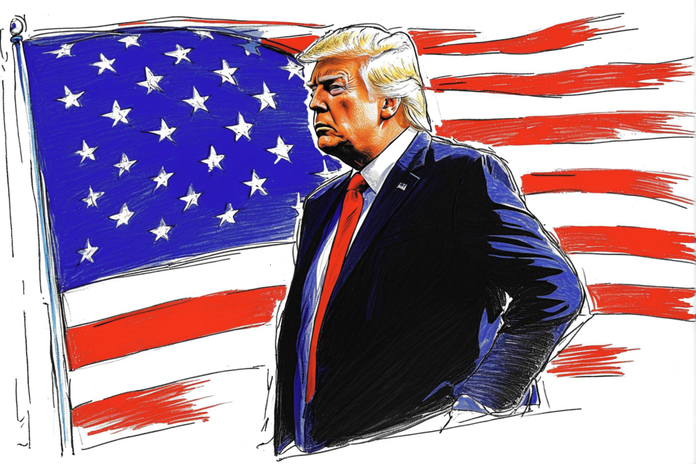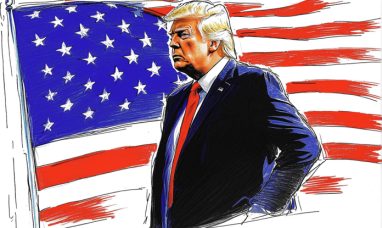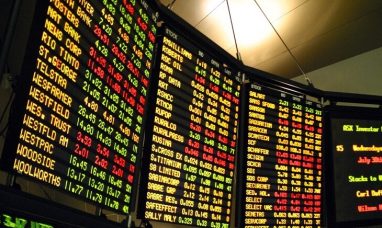Global equity markets were mostly in retreat on Friday as investors eyed the Trump tariff deadline looming on July 9. While U.S. stocks reached fresh highs, unease gripped Asia and Europe amid concerns that renewed trade tensions could disrupt economic momentum.
Europe Slides as U.S. Deadline Approaches
In early European trading, major indexes turned red. Germany’s DAX dropped 0.8% to 23,730.61, France’s CAC 40 fell 1.1% to 7,666.91, and the UK’s FTSE 100 declined 0.4% to 8,790.21. Futures contracts for both the S&P 500 and Dow Jones Industrial Average were also down 0.5%, indicating that the record-setting run on Wall Street could soon face resistance.
Despite recent U.S. market strength, European investors are reacting to President Donald Trump’s tariff deadline, fearing a possible escalation in trade policy that could ripple through export-driven economies.
Asian Markets Mixed Amid Uncertainty
Asia’s performance was more scattered. Japan’s Nikkei 225 managed a slight 0.1% gain to 39,810.88 after rebounding from early losses. However, South Korea’s KOSPI dropped 2% to 3,054.28, and Hong Kong’s Hang Seng fell 0.6% to 23,916.06. Mainland China’s Shanghai Composite Index inched up 0.3% to 3,472.32, while Australia’s ASX 200 gained 0.1%. India’s Sensex slipped 0.1% to 83,148.45.
Stephen Innes of SPI Asset Management summed up the region’s anxiety, saying, “Asian markets slipped into Friday like someone entering a dark alley with one eye over their shoulder.” The driver? Persistent nervousness about the Trump tariff deadline and the potential for sudden policy action.
Trump’s Tariff Threat Sparks Volatility
The July 9 deadline has markets on edge. Trump’s proposed tariffs on imports from several countries—still on hold for now—could be activated next week if no new deals are struck. Mizuho Bank warned that countries might receive formal letters outlining tariff levels as early as Friday.
Markets are bracing for a potential disruption to global supply chains. Some analysts fear Trump may use the tariffs as a negotiation tool during his campaign, which could inject fresh volatility into global trade relationships.
U.S. Stocks Defy Global Mood—for Now
Back home, U.S. equities continue to outperform. On Thursday, the S&P 500 rose 0.8%, notching its fourth record high in five days. The Dow Jones Industrial Average gained 344 points (0.8%), and the NASDAQ Composite climbed 1%.
The catalyst was a stronger-than-expected U.S. jobs report, suggesting continued economic resilience. Still, U.S. futures were down early Friday, reflecting caution ahead of the tariff deadline.
Commodities and Currencies React
In commodities, U.S. crude oil fell 45 cents to $66.55 per barrel, while Brent crude, the global benchmark, dropped 53 cents to $68.27.
Currency markets were also jittery. The U.S. dollar weakened against the Japanese yen, falling to 144.34 from 144.92, while the euro edged higher to $1.1773.
What Investors Should Watch
As the Trump tariff deadline approaches, investors should watch for:
Official White House communications on trade policy
Market reactions to any tariff letters sent to foreign governments
Signs of retaliatory trade actions or negotiations
While U.S. stocks remain resilient for now, a policy surprise from Trump could shift sentiment quickly. Global markets, especially export-heavy regions, are particularly vulnerable to any escalation.
Conclusion: Calm Before the Storm?
With July 9 just around the corner, markets are in a state of cautious divergence. Wall Street is celebrating strong economic data, while the rest of the world is bracing for the unknown.
If Trump proceeds with tariffs, the Trump tariff deadline could mark a turning point in global market sentiment. Investors would be wise to stay alert—and diversified.
While the U.S. economy appears strong for now, rising trade tensions could weigh on future earnings, disrupt supply chains, and introduce volatility across asset classes. As July 9 approaches, staying informed and managing risk exposure will be critical.









